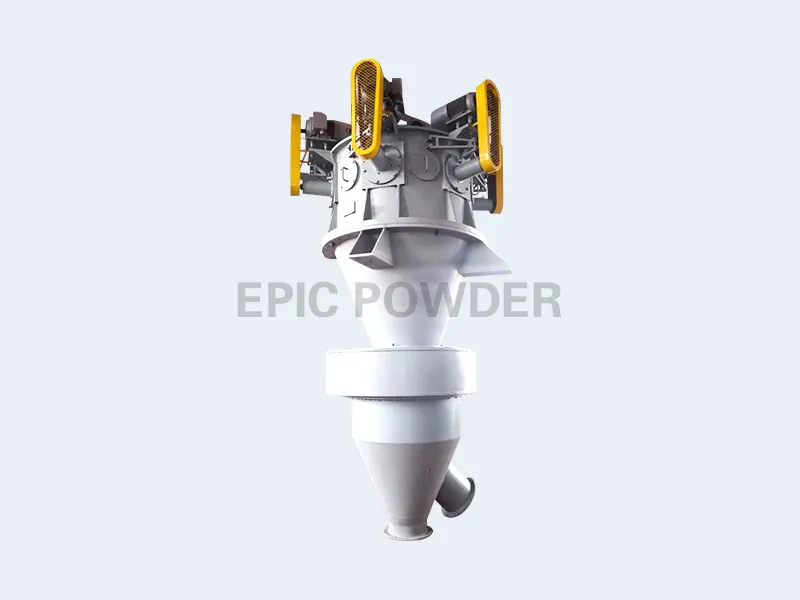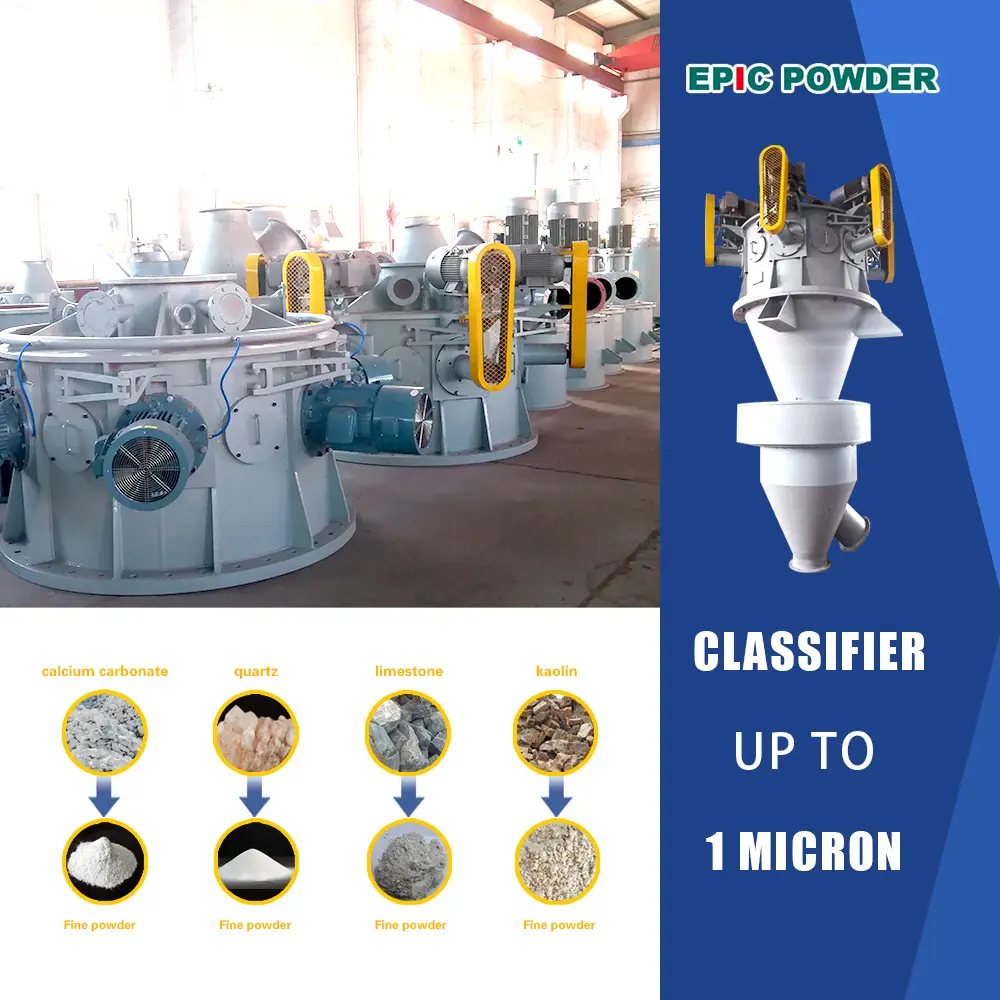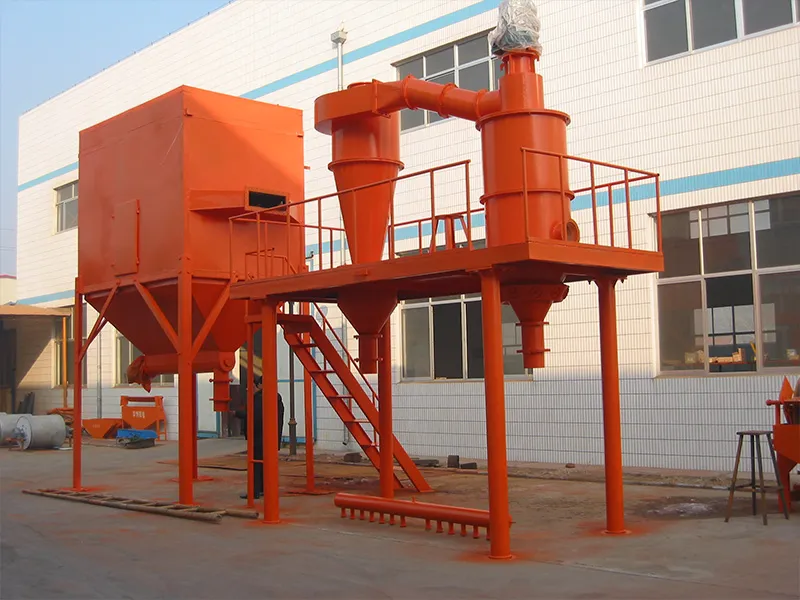In modern industrial production, precise particle classification is a fundamental step across diverse sectors. Whether it involves raw material processing in pharmaceuticals, refining products in chemicals, or screening materials in food processing, the ability to separate particles accurately by size drives product quality, process efficiency, and overall operational success. The air classifier is a sophisticated device designed to deliver this essential function by harnessing aerodynamic principles, allowing particles to “find their place” based on how airflow interacts with their physical characteristics. This article will explore the application values of air classifiers.

Working Principle of Air Classifiers
The core component of an air classifier is a high-speed rotating impeller wheel. When mixed particles enter the classification chamber, they disperse under the action of airflow. Larger particles, due to their greater mass, experience centrifugal force stronger than the drag force of the airflow and are thrown toward the chamber walls, where they fall. Meanwhile, smaller particles follow the airflow through the gaps between the impeller blades and enter the fine powder collection system. By adjusting the rotational speed of the impeller wheel, the classification particle size can be precisely controlled, enabling the separation of different particle size ranges.
Key Technological Breakthroughs
Over recent years, air classifiers have integrated several innovative technologies to enhance their performance dramatically. The utilization of supersonic nozzle technology, for example, has enabled a more uniform dispersion of the input material, ensuring an even distribution of particles before classification begins.
Additionally, intelligent control systems now allow real-time monitoring and adjustment of classification parameters. This feature guarantees consistent precision, even as feed material properties or environmental conditions fluctuate during extended production runs.
Materials engineering innovation has also played a critical role. The use of wear-resistant alloys and ceramics in key components extends equipment lifetime significantly. This advancement reduces downtime and maintenance costs, directly impacting production continuity and profitability.
These technological developments have brought classification efficiencies to over 98%. Furthermore, modern air classifiers can reliably achieve minimum classification particle sizes down to 1 micron, meeting the evolving demands of ultra-fine powder industries.

Industrial Application Value
Air classifiers have vital application values across a broad spectrum of industries, each benefiting from the devices’ precise sorting capabilities.
In the realm of lithium battery material production, air classifiers are indispensable for separating cathode powders based on size. Consistent particle size distribution profoundly affects battery performance by ensuring stable charge and discharge cycles and prolonging battery life.
Pharmaceutical manufacturing likewise relies on air classifiers to achieve the fine classification of active pharmaceutical ingredients (APIs). Precise particle sizing improves dissolution rates and bioavailability, which can enhance therapeutic efficacy and reduce dosage requirements.
In the food processing industry, classification contributes to producing fine powdered products with consistent texture and quality. This enhances product uniformity and consumer experience, while supporting regulatory compliance through standardization.
The chemical industry leverages air classifiers for pigment production, catalyst preparation, and raw material refinement. In these applications, the ability to control ultrafine particle size distributions enables improved chemical reactivity, color strength, and product stability.
The versatility and precision of air classifiers demonstrate their application values in optimizing product performance and process efficiency across multiple sectors.
Data-Backed Insights
According to industry reports, air classifiers are responsible for improving classification accuracy by over 20% compared with traditional screening and sifting methods. This accuracy translates into measurable production benefits. For instance, battery manufacturers using advanced air classification have observed up to a 15% increase in electrode capacity due to more uniform particle size distributions.
Furthermore, pharmaceutical production lines using air classifiers have reported up to a 25% enhancement in dissolution rates, leading to faster onset of action in medications. In the coating and pigment sector, fine particle control reduces raw material waste by approximately 10%, cutting costs and environmental impact.
Energy efficiency is another advantage. Compared to wet classification methods, air classifiers consume on average 30% less energy while providing dry processing, reducing water usage and subsequent treatment expenses.
Future Outlook and Market Trends
The rapid advancement of new materials, including nanomaterials, energy storage products, and advanced ceramics, is placing increasingly stringent demands on particle classification technologies. The industry is witnessing a clear trend toward classifiers with greater precision, reduced energy consumption, and enhanced automation.
Developments in machine learning and AI-driven control systems are expected to provide more adaptive and self-optimizing classifiers. Such classifiers will maintain peak performance with minimal human intervention and adapt in real-time to material variations.
Environmental sustainability is also shaping future designs. New classifiers aim to minimize dust emissions, reduce noise levels, and maximize material recovery, aligning with tighter environmental regulations.
Overall, air classifiers will continue to evolve into smarter, cleaner, and more efficient devices that form the backbone of future manufacturing excellence.
Mengenai Jentera Serbuk EPIC
Jentera Serbuk EPIC Co., Ltd. is dedicated to providing tailor-made air classification solutions to meet evolving industrial needs. Choosing EPIC Powder Machinery means partnering with a trusted innovator that transforms particle classification challenges into production success stories. For inquiries or to learn how our air classifiers can elevate your process, please contact our expert team.

